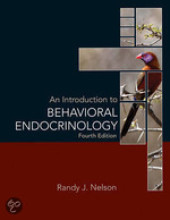Summary: Hap-31806: Molecular Regulation Of Health And Disease | Jaap Keijer
- This + 400k other summaries
- A unique study and practice tool
- Never study anything twice again
- Get the grades you hope for
- 100% sure, 100% understanding
Read the summary and the most important questions on HAP-31806: Molecular Regulation of Health and Disease | Jaap Keijer
-
1 Molecular regulation of energy and nutrient metabolism
-
1.1.1 Tumour VS cancer
-
What is the difference between a tumour and cancer?
Cancer is by definition malignant. A tumour can be benign, pre-malignant, or malignant, or can represent a lesion with no cancerous potential whatsoever. A cancer is a malignant neoplasm. It can invade adacent tissues, show metastasis. Tumours do not metastasise.
-
What differences are in the metabolism of proliferating cells?
- High rates of glycolisis
- Lactate production
- Biosynthesis of lipids and other macromolecules.
-
1.2.1 Mitochondrial functions
-
What are mitochondiral functions?
- ATP production
- respond to cellular energy requirement
Regulatory role in
- balanced use of energy substrates (lipids sugars and amino acids
- Urea cycle
- Calcium homeostasis
- amino acid metabolism
Essential in
- heme and iron0sulphur cluster biosynthesis
Mediate in
- apoptosis
- innate imunes defance
- Oxidative signaling, mediated by ROS that are produced by mitochondira play an important rol
-
What are the MIM protein funtions?
- Redox reactions of Oxidative phosphorylations
- ATP synthase (generates ATf metabolitesP in matrix)
- specific transport o
- Protein import machinery
- Mitochondria fusion and fission proteins
Does not contain porins.
-
1.2.3 Reactive Oxygen species
This is a preview. There are 2 more flashcards available for chapter 1.2.3
Show more cards here -
Wha does the body do with ROS?
Soperoxide anions are readily interonverdid into other radical speciesas OH- (hydroxyl) an then disarmed, first as H2O2 and then converted to water.
The enzymes involved are
- SOD1 (cytoplasmic)
- SOD 2 ( mitochondrial) Both convert to H202
- Catalase ( peroxisome)
- Gpx (mitochindria) Both convert to water
Also vitamin C and E have an important rol in protection against ROS.
ROS is also a signaling molecule
-
1.2.4 Apoptosis and programmed necrosis
-
Wha are master switch proteins (that can lead to apoptosis) and where do they result in?
HIF1, c-Myc and P53
- Upreglation of survival proteins -> for exampel anti-apoptotic proteins such as Bcl-2 Bcl-XL and Mcl-1
- Supprssion of pro-apoptotic proteins -> for example BAX
- Silencing death receptors (like FAS and TRAIL)
- Hexokinase II can also lead to resistance to apoptosis. They then bind more to VDAC in tumours which causes increased resistance of MP
-
1.3.2 Why does metabolic reprogramming occur?
-
Why the Wargburg (Glycolysis) effect?
- Allows the cell to use the most abundant extracellular nutrient, glucose to produce lots of ATP
- glucose degradation provides the cell with intermediates needed for biosynthesis
- it allows the cells to fintune the control of iosynthetic pathways that use intermediates derived from glucose metabolism
-
2 Microbioata in health and disease
-
2.1.2.1.1 Stomach
-
What are the stomach microbiota?
pH 2-3
Is the fisrt line of defence for excessive colonization.
Most known somach bacterium is Helicobacter pylori -> gastritis
-
2.1.2.1.2 Small intestine
-
Small intestine microbiota?
Harsch environment for micobiota. Due to fast transit and precense of bile and digestive enzsime
PArts:
Duodenum (first part) - limited microbiota
10^4 in jejenum to 108 in terminal ileum (terminal ileum resembles clon microbiota)
Little is known about microbial life in small intestine
typical zare
Streptococcus spp Veillonella Spp and other members of Firmicutes (low G+C gram positive) -
2.1.3 Ecology of GI microbiota
-
What are the functions of microbes in the GI tract?
- conversion of indigestible fod components
- development of intestine structure and functions
- productions of vitamins that are not present in food
- protecting against invasion of pathogens
- deconjugation of bile slats
- bile pigment metabolism
- recycling hormones by beta glucoronidase activity
- colesterol conversion
negative:
toxic mutagenic and carcinogenic product compounds
- Higher grades + faster learning
- Never study anything twice
- 100% sure, 100% understanding






























